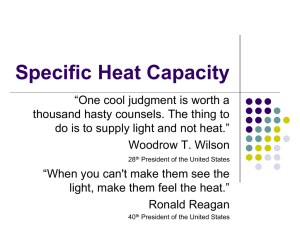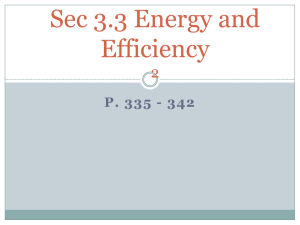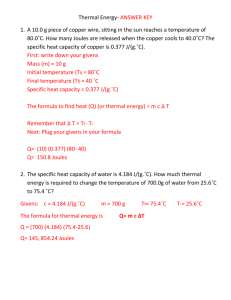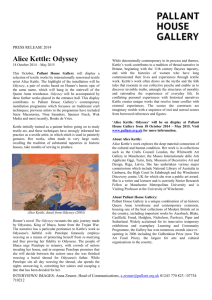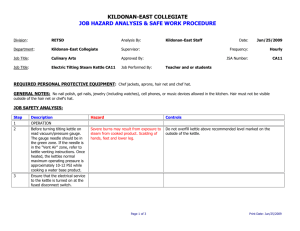Energy Efficiency Lecture and Lab Sheet 2011
advertisement
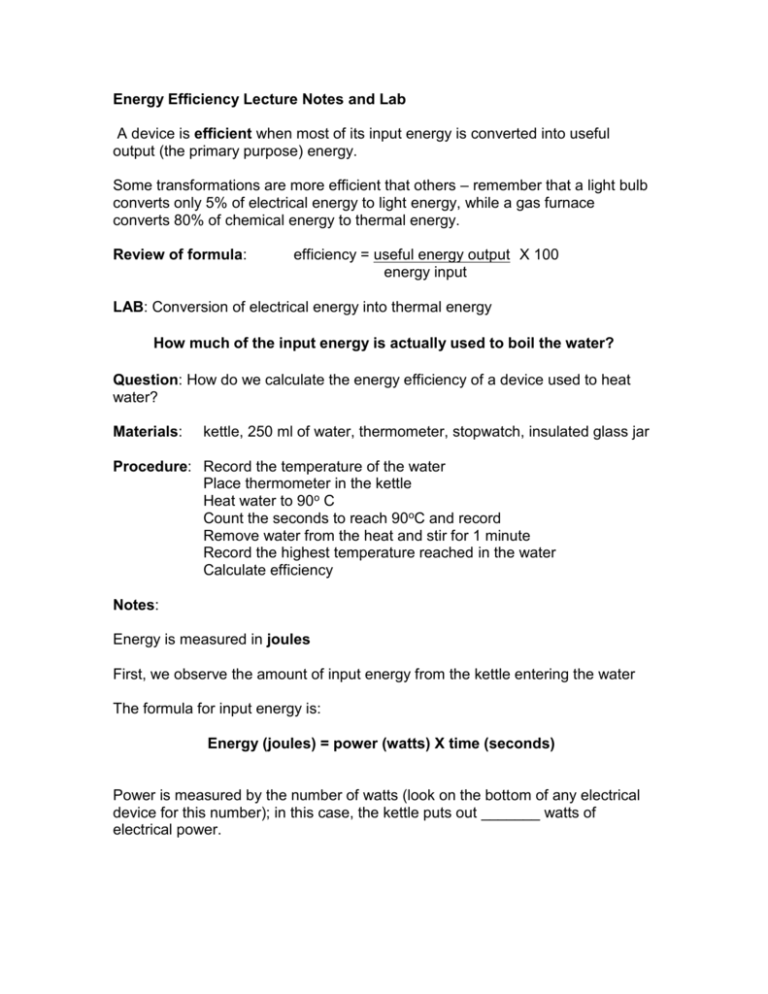
Energy Efficiency Lecture Notes and Lab A device is efficient when most of its input energy is converted into useful output (the primary purpose) energy. Some transformations are more efficient that others – remember that a light bulb converts only 5% of electrical energy to light energy, while a gas furnace converts 80% of chemical energy to thermal energy. Review of formula: efficiency = useful energy output X 100 energy input LAB: Conversion of electrical energy into thermal energy How much of the input energy is actually used to boil the water? Question: How do we calculate the energy efficiency of a device used to heat water? Materials: kettle, 250 ml of water, thermometer, stopwatch, insulated glass jar Procedure: Record the temperature of the water Place thermometer in the kettle Heat water to 90o C Count the seconds to reach 90oC and record Remove water from the heat and stir for 1 minute Record the highest temperature reached in the water Calculate efficiency Notes: Energy is measured in joules First, we observe the amount of input energy from the kettle entering the water The formula for input energy is: Energy (joules) = power (watts) X time (seconds) Power is measured by the number of watts (look on the bottom of any electrical device for this number); in this case, the kettle puts out _______ watts of electrical power. The original temperature of the water is ________ oC The water reached 90oC in ______ seconds Therefore, the power, or input energy, from the kettle during this experiment was: ______ watts x _____ sec. = ________ joules Now, let’s calculate the efficiency of the kettle to convert input energy to output energy: The highest water temperature reached was ______oC. The original temperature of the water was ______oC, so the temperature gain was _____ (highest) - _____ (original) = _____oC How much thermal energy was absorbed by the water? The formula to calculate thermal efficiency is: Thermal energy = volume of water x temperature change x 4.2 joules/ml – o C* Thermal energy = 250 ml x _____ x 4.2 = ______ joules *The 4.2 figure is a constant in this equation, just like pi is a constant value in calculating circumference of a circle Now, you complete the efficiency equation: efficiency = useful energy output X 100 energy input Useful energy input = _________ joules Energy input = _________ joules (_________divided by _________) = . _______ X 100 = _______ Therefore, the energy efficiency rating of the kettle is ____, or the water is absorbing only _____% of the input energy. How does this compare with a light bulb or gas furnace? ________________________________________________________________ Was all of the electrical energy supplied by the kettle transformed into thermal energy in the water? Where else do you think the energy went? ________________________________________________________________ ________________________________________________________________



